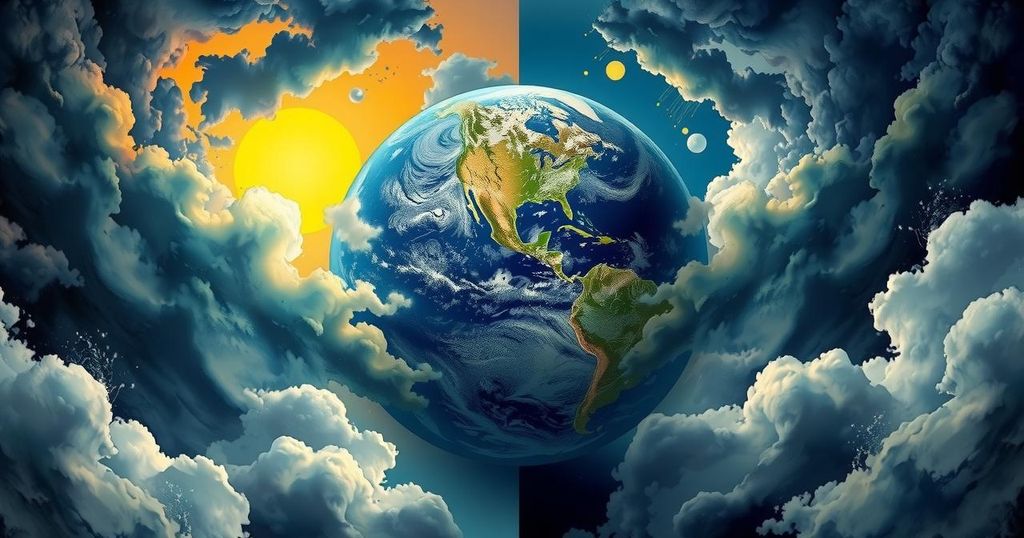A report from WaterAid reveals that climate change is causing significant shifts in weather patterns across many cities, with 95 percent of the world’s 100 most populous cities experiencing increased extremes such as drought and flooding. The study emphasizes the urgent need for enhanced urban infrastructure to mitigate these effects. Notable examples include cities like Nairobi and Los Angeles, which exemplify the challenges linked to climate whiplash.
The phenomenon termed “climate whiplash” is affecting numerous cities globally as they confront abrupt shifts in weather patterns, particularly from wet to dry extremes or the reverse. A new report from WaterAid examined climate trends affecting the 100 most populous cities and found that 95 percent displayed significant transitions toward either wetter or drier conditions over the past 40 years, raising alarms about clean water access, sanitation, food security, disease proliferation, and community displacement.
Currently, over 4.4 billion individuals reside in urban areas, which strains existing provisions for water supply, sewage systems, and flood defenses. As climate change alters weather patterns, urban infrastructure becomes inadequate, complicating new developments.
Professor Katerina Michaelides of the University of Bristol, a co-author of the report, remarked, “Our study shows that climate change is dramatically different around the world.” In contrast to the drier conditions being experienced in Europe, the Arabian Peninsula, and much of the United States, southern and southeastern Asian cities are facing extreme rainfall.
More than 20% of the cities assessed are undergoing significant reversals in climate extremes. Warmer air contributes to heightened extremes by absorbing more moisture during dry spells and subsequently releasing it in intense rainstorms. Cities like Cairo, Madrid, and Riyadh face severe transitions from wet to dry climates, with Hong Kong also noted for its significant fluctuations.
Prolonged droughts can lead to water shortages and disrupt food security, crippling regions dependent on hydropower. Conversely, floods foul drinking water sources, inundate agricultural areas, and destroy vital infrastructure, as demonstrated by Brazil’s severe drought last year.
Cities suffering from climate whiplash face the compounded consequences of both drought and flooding. During their time in Nairobi, Kenya, the authors observed this firsthand; following years of drought conditions, sudden heavy rains resulted in flash floods causing loss of life and displacement.
A tragic instance of climate whiplash occurred in Los Angeles, where abundant vegetation from a wet spell became kindling during subsequent dry conditions, leading to catastrophic wildfires that resulted in at least 29 fatalities and extensive property damage.
Nairobi and Los Angeles are part of a group of cities, representing 15% of those studied, that have experienced climate whiplash. This group also includes cities like Baghdad, Bangkok, Melbourne, Jakarta, and Hangzhou. The rapid shifts in weather extremes present significant challenges for urban preparedness and recovery, ultimately impacting the quality of life for residents.
In summary, climate whiplash poses a growing danger for cities worldwide, as evidenced by significant weather fluctuations leading to severe consequences such as flooding and drought. The report by WaterAid highlights the urgent need for improved urban infrastructure to manage these unpredictable climate events effectively. Addressing this issue is crucial for safeguarding communities and ensuring access to essential resources such as clean water and food security.
Original Source: macaonews.org




